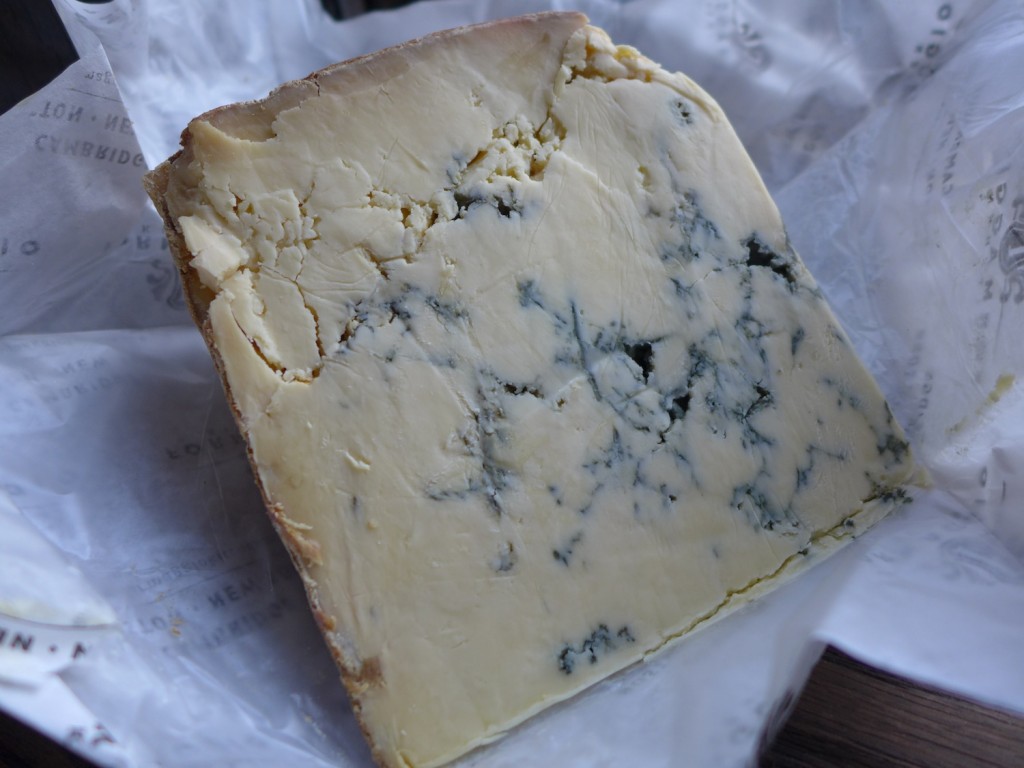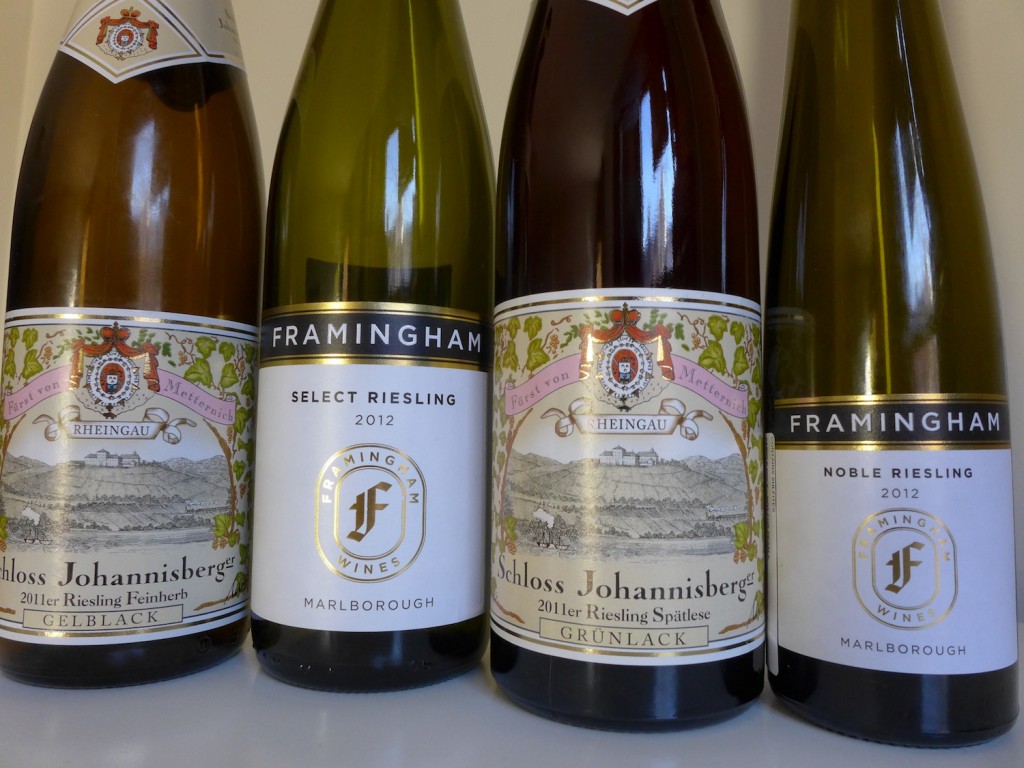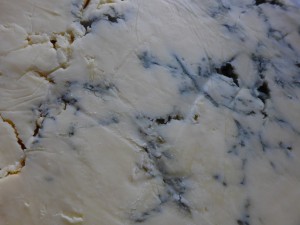 Is it a myth or does blue cheese have a special affinity for sweet Riesling? Is this combination even one of that rare breed the food and wine no brainers? As much as we at STUART PIGOTT RIESLING GLOBAL love Riesling we’re not clueless cheerleaders in ultra-short skirts for our favorite grape variety. We want to know what works and the only way to find that out is to test. We therefore conducted a series of testes at our HQ in the Hotel of Hope in New York City’s East Village.
Is it a myth or does blue cheese have a special affinity for sweet Riesling? Is this combination even one of that rare breed the food and wine no brainers? As much as we at STUART PIGOTT RIESLING GLOBAL love Riesling we’re not clueless cheerleaders in ultra-short skirts for our favorite grape variety. We want to know what works and the only way to find that out is to test. We therefore conducted a series of testes at our HQ in the Hotel of Hope in New York City’s East Village.
From the local grocery store came the Bel Gioioso crumbly Gorgonzola from Wisconsin, which is what most Americans think of when you say “blue cheese” to them. However, in case you think this is just any old cheese I should point out that the American Cheese Society awarded it best of class in 2012. Then we headed down to Saxelby Cheesemongers in Essex Street Market and purchased pieces of Bayley Hazen Blue, a creamy unpasteurized cow’s milk cheese made by Jasper Hill in Vermont and Ewe’s Blue, a pasteurized sheep’s milk blue of the Roquefort-type from Old Chatham Sheepherding in New York’s Upper Hudson Valley. Finally I crossed Essex Street Market and obtained a chunk of Stichelton, the only unpasteurized Stilton type cheese produced in England (to be precise in Nottinghamshire) from Formaggio.
Next to them on the laboratory bench we placed two Rieslings each from rising star New Zealand winery Framingham in Marlborough and from Germany’s legendary Schloss Johannisberg in the Rheingau. In each case one wine was lighter in both sweetness and price, the other a high-end sweet Riesling of the kind fancy restaurants have on their wine lists and wine nerds lust after. The driest of them was the 2011 Riesling ‘Gelblack’ from Schloss Johannisberg, which is at the dry end of medium-dry on the IRF scale, then came the medium-sweet 2012 ‘Select’ Riesling from Framingham, next sweetest was the 2011 Riesling Spätlese ‘Grünlack’ from Schloss Johannisberg at the dry end of sweet on the IRF scale, and finally the frankly sweet 2012 ‘Noble’ Riesling from Framingham. All of these wines had a healthy acidity content, though this was rather more pronounced in the New Zealand wines than the German ones.
Four wines and four cheese gives 16 possible combinations, which means plenty of tasting, but on the other hand doesn’t tell you everything about blue cheese and sweet Riesling. To fill out the picture the results of earlier tastings with different wines and cheeses were also taken into account.
The first thing to point out is how very different blue cheeses taste. For example, although the Ewe’s Blue is a Roquefort-type it is neither as oily nor as salty as actual Roquefort. The high alcoholic content, moderate sweetness and underlying tannins of Sauternes makes them a better match with real Roquefort than most sweet Rieslings. Only the most unctuous late-harvest Rieslings (e.g. SGN from Alsace or TBA from the Pfalz) can cope reasonably well with Roquefort. Would the less extreme style of Ewe’s Blue help it match the Rieslings, or not?
Bayley Hazen Blue is sometimes described as being a Stilton-type cheese, but it is not as dense and creamy as Stichelton. Would that lead to significant differences in their ability to harmonize with sweet Riesling? And how much sweetness is necessary for Riesling to have a real chance of matching blue cheese? We wanted to find out and in order to do so we left our preconceptions in the closet as we came into the tasting lab.
Since the Bel Gioioso crumbly Gorgonzola was the mildest of the cheeses we started there. It is certainly a well-made product, but a bit young and simple in flavor with a discrete blue taste in spite of the strong blue color. It would definitely be best served crumbled over a salad, in which form it would probably also go rather well with the 2011 Riesling ‘Gelblack’ from Schloss Johannisberg. This is a juicy, peachy Riesling that still finishes pretty dry and crisp. Tasted directly with the Bel Gioioso it was barely sweet enough to match. All of the other wines went much better with the cheese, but their combination of higher sweetness and ripe aromas were really too much for the cheese. Being too dry is obviously a pitfall for Rieslings under “classic” Spätlese type (about 5% – 8% residual sweetness) when pushed up next to blue cheese. And if you want to drink a medium-dry Riesling, American or European, with blue cheese, then I suggest you need to crumble something like this mild Gorgonzola over a salad with a not too tart dressing (watch out for the high acidity in cheaper balsamic vinegars!)
Next was the Ewe’s Blue, which the 2011 Riesling Spätlese ‘Grünlack’ from Schloss Johannisberg matched beautifully; a classic example of a well balanced salty-sweet combination. Indeed, the cheese seemed to unlock another dimension of spice in the wine, which is already complex and tantalizing by itself. The 2012 ‘Select’ Riesling from Framingham also did rather well with this cheese though the wine’s acidity was a little strong, whereas the much more concentrated 2012 ‘Noble’ Riesling from the same produced sailed though the cheese almost effortlessly. Sure, these are “First World Problems”, but we found all of this really fascinating. Blue cheese and sweet Riesling is definitely not a no-brainer if you want a perfect match.
Even the moderate creaminess of the Bayley Hazen Blue overwhelmed the medium-dry 2011 Riesling ‘Gelblack’ from Schloss Johannisberg, which tasted much tarter with this cheese and the Stichelton than drunk by itself. We liked both the cheese and the wines, but this was definitely a mismatch. All three sweeter wines did much better with Vermont’s best known premium quality blue cheese, but the cheese emphasized their citric side and the 2012 ‘Select’ Riesling form Framingham became one-sidedly citric. None of them was quite perfect with this cheese, but it was always the cheese which came out on top. It was pretty much the same situation with the Stichelton. Here the 2012 ‘Noble’ Riesling from Framingham had the edge over the other wines purely because of its density and higher residual sweetness. However, a vintage port with a decade or more of bottle age would have been even better thanks to its greater body, warm tannins and moderate acidity.
So obviously one rule is that if in doubt go for a wine with more sweetness rather than less. Moderate acidity is also a plus when matching sweet Rieslings with blue cheese. Either ask your friendly wine merchant for a wine of this type or go for the last vintage with softer acidity (in Germany, Austria and Alsace this is 2011, in North America 2010). At the end I found myself impressed by the American cheeses, but hankering after a piece of ripe Fourme d’Ambert, a creamy cow’s milk cheese from the Auvergne in France and a bottle of mature sweet Mosel Riesling Spätlese. Now that really is a food and wine no brainer!



![120114_riesling_global_RZ [1600x1200]](http://www.stuartpigott.de/wp-content/uploads/2013/01/120114_riesling_global_RZ-1600x12002.jpg)
Pingback: Johannisberg Dry Riesling Selection Original